Cowal is a peninsula in Argyll and Bute, in the west of Scotland, that extends into the Firth of Clyde.
 W
WThe A83 is a major road in the south of Argyll and Bute, Scottish Highlands, running from Tarbet, on the western shore of Loch Lomond, where it splits from the A82, to Campbeltown at the southern end of the Kintyre peninsula.
 W
WThe A886 road in Scotland is an unusual road in the United Kingdom, located in the south of Argyll and Bute, on the Cowal peninsula and on the Isle of Bute. The only road number to include a ferry crossing along the route. The Caledonian MacBrayne ferry service runs between Colintraive in Cowal, on the mainland, and Rhubodach on the Isle of Bute.
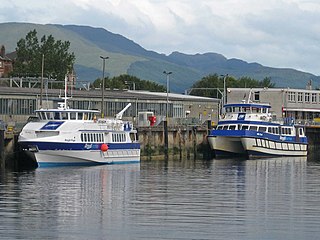 W
WArgyll Ferries Ltd was a ferry company formed in January 2011 by the Scottish Governments department of Transport Scotland via the parent company David MacBrayne Ltd to tender for the Dunoon to Gourock public service route. Argyll Ferries were announced as the preferred bidder at the end of May 2011, contracts were exchanged on 7 June 2011 for the service, the service then commenced 23 days later on 30 June 2011.
 W
WArgyll Forest Park is a forest park located on the Cowal peninsula in Argyll and Bute, Scottish Highlands. Established in 1935, it was the first forest park to be created in the United Kingdom. The park is managed by Forestry and Land Scotland, and covers 211 km2 in total.
 W
WThe Arrochar Alps are a group of mountains located around the head of Loch Long, Loch Fyne, and Loch Goil, near the villages of Arrochar and Lochgoilhead, on the Cowal Peninsula in Argyll and Bute, Scotland. The mountains are especially popular with hillwalkers, due to their proximity and accessibility from Glasgow. They are largely within the Loch Lomond and The Trossachs National Park and in part also extend into the Argyll Forest Park. Glens which go into the heart of the range include: Glen Croe, Hell's Glen and Glen Kinglass.
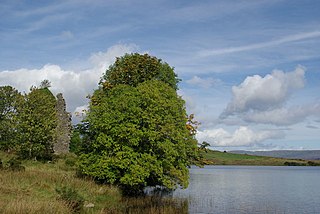 W
WAsgog Loch; is a natural freshwater loch, situated about 4 kilometres (2.5 mi) southwest of Tighnabruaich, on the Cowal peninsula within Argyll and Bute, Scotland, which was dammed to create an impounding reservoir for the supply of freshwater to the Low Mills of the nearby gunpowder mills at Millhouse.
 W
WAuchenbreck Castle; is located on the Cowal peninsula, in Argyll and Bute, Scotland. Its remains are situated in Kilmodan parish, near the mouth of Glendaruel, 9 kilometres (5.6 mi) north of Tighnabruaich on the Cowal peninsula. Little remains of the castle, other than a flat rectangular platform, around 35 by 18 metres, between Auchenbreck farmhouse and the Auchenbreck Burn. This is partially bounded by a revetment wall up to 2.2 metres high.
 W
WBeinn Mhòr is the highest mountain on the Cowal Peninsula west of Loch Eck in Argyll and Bute, Scotland. It has a high topographic prominence to height ratio and consequently commands a good all round view.
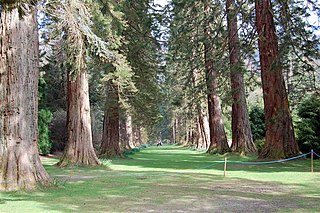 W
WBenmore Botanic Garden is a large botanical garden situated in Strath Eachaig at the foot of Beinn Mhòr, on the Cowal peninsula, in Argyll and Bute, Scotland. The gardens are on the west side of the A815 road from Dunoon, between the Holy Loch and Loch Eck, and include footbridges across the River Eachaig.
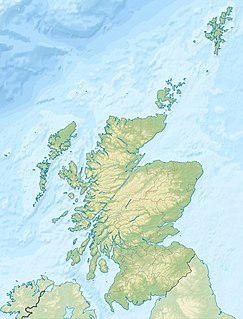 W
WThe Burnt Islands are three small islands that lie in the Kyles of Bute, on the Cowal Peninsula, Argyll and Bute, on the West coast of the Scottish mainland. The islands are located at grid reference NS017752.
 W
WCaledonian MacBrayne, usually shortened to CalMac, is the major operator of passenger and vehicle ferries, and ferry services, between the mainland of Scotland and 22 of the major islands on Scotland's west coast. Since 2006 the company's official name has been CalMac Ferries Ltd although it still operates as Caledonian MacBrayne. In 2006 it also became a subsidiary of holding company David MacBrayne, which is owned by the Scottish Government.
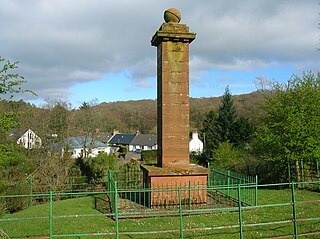 W
WMary Campbell, also known as Highland Mary, was the daughter of Archibald Campbell of Daling, a sailor in a revenue cutter, whose wife was Agnes Campbell of Achnamore or Auchamore. Mary was the eldest of a family of four. Robert Burns had an affair with her after he felt that he had been "deserted" by Jean Armour following her move to Paisley in March 1786. The brief affair started in April 1786, and the parting took place on 14 May of that year. Her pronunciation of English was heavily accented with Gaelic and this led to her becoming known as 'Highland Mary.'
 W
WCastle MacEwen is a ruined fort in the Cowal peninsula, on the east shore of Loch Fyne in Argyll and Bute, Scotland. It is near Kilfinan, around 5 kilometres (3.1 mi) south of Otter Ferry.
 W
WCastle Toward is a nineteenth-century country house on the southern tip of the Cowal peninsula, overlooking Rothesay Bay in Argyll and Bute on the west-coast of Scotland.
 W
WCowal is one of the eleven wards used to elect members of the Argyll and Bute Council. It elects three Councillors.
 W
WThe Cowal Highland Gathering is an annual Highland games held in the Scottish town of Dunoon, on the Cowal peninsula in Argyll and Bute, over the final weekend in August.
 W
WDavid MacBrayne is a limited company owned by the Scottish Government. Formed in 1851 as a private shipping company, it became the main carrier for freight and passengers in the Hebrides, with a co-ordinated network of shipping, road haulage and bus operations. In 1973, it was merged with Caledonian Steam Packet Company as state-owned Caledonian MacBrayne. Since 2006 it has been the holding company for ferry operators CalMac Ferries Ltd and Argyll Ferries.
 W
WDunoon is the main town on the Cowal peninsula in the south of Argyll and Bute, Scotland. It is located on the western shore of the upper Firth of Clyde, to the south of the Holy Loch and to the north of Innellan. As well as forming part of the council area of Argyll and Bute, Dunoon also has its own community council. Dunoon was a burgh until 1976.
 W
WThe Dunoon massacre was a massacre that took place around Dunoon on the Cowal Peninsula, Scotland, on June 3, 1646. Men of the powerful Clan Campbell massacred men, women and children of the Clan Lamont.
 W
WThe Firth of Clyde is the mouth of the River Clyde and the deepest coastal waters in the British Isles, sheltered from the Atlantic Ocean by the Kintyre peninsula which encloses the outer firth in Argyll and Ayrshire. The Kilbrannan Sound is a large arm of the Firth of Clyde, separating the Kintyre Peninsula from the Isle of Arran. Within the Firth of Clyde is another major island – the Isle of Bute. Given its strategic location, at the entrance to the middle/upper Clyde, Bute played a vitally important military (naval) role during World War II.
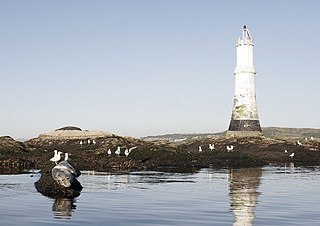 W
WThe Gantocks is a small group of rocks lying off Dunoon in the upper Firth of Clyde, West of Scotland.
 W
WThe Holy Loch is a sea loch, a part of the Cowal peninsula coast of the Firth of Clyde, in Argyll and Bute, Scotland.
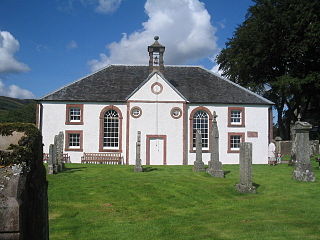 W
WKilmodan is a civil parish situated on the Cowal Peninsula, in Argyll and Bute, in Scotland. It includes the valley of Glendaruel and surrounding areas, with Kilmodan Church located in the Clachan of Glendaruel. The alternative historical spelling, Kilmadan, is no longer used.
 W
WThe Kilmodan Carved Stones are a group of West Highland carved grave slabs exhibited in a burial aisle within Kilmodan Churchyard, Clachan of Glendaruel, within the Cowal Peninsula, Argyll and Bute. They are in the care of Historic Scotland.
 W
WBuilt in 1783 Kilmodan Church, is in the Clachan of Glendaruel in the Kilmodan parish of the Cowal peninsula, Argyll and Bute, West of Scotland. It is constructed to a Georgian T-plan design and a category B listed building. The walls are inset with shields from the previous church on the site and one is inscribed and dated 'SDC/1610.' There is also a memorial to Rev John Maclaurin and his notable sons. It has a rendered front and both the ends and rear are harled. The building underwent complete restoration in 1983.
 W
WKilmun Parish Church and Argyll Mausoleum in Kilmun, Argyll and Bute, Scotland, consists of St Munn's Church, as well as the adjacent mausoleum of the Dukes of Argyll and a historically significant churchyard. The complex is located on the summit of a slight knoll about ten metres from the shoreline of the Holy Loch on the Cowal Peninsula in Argyll, Scotland. The existing church dates from 1841 and occupies the site of an older, medieval church. A partly ruined tower from the medieval period still stands to the west of the present building.
 W
WThe Kyles of Bute form a narrow sea channel that separates the northern end of the Isle of Bute from the Cowal peninsula in Argyll and Bute, on the Scottish mainland. The surrounding hillsides are roughly wooded, and overlooked by rocky tops and areas of moorland.
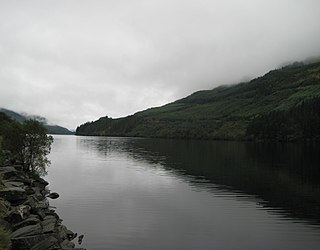 W
WLoch Eck is a freshwater loch located on the Cowal peninsula, north of Dunoon, Argyll and Bute, Scotland. It is seven miles long. Along with Loch Lomond, it is the only naturally occurring habitat of the Powan (fish). The loch also has salmon, sea trout, brown trout and arctic charr.
 W
WLoch Fyne, is a sea loch off the Firth of Clyde and forms part of the coast of the Cowal peninsula. Located on the west coast of Argyll and Bute, Scotland. It extends 65 kilometres (40 mi) inland from the Sound of Bute, making it the longest of the sea lochs in Scotland. It is connected to the Sound of Jura by the Crinan Canal. Although there is no evidence that grapes have grown there, the title is probably honorific, indicating that the river, Abhainn Fìne river Fyne, was a well-respected river.
 W
WLoch Goil; is a small sea loch forming part of the coast of the Cowal peninsula in Argyll and Bute, Scotland. The sea loch is entirely within the Loch Lomond and The Trossachs National Park.
 W
WThe Loch Lomond and Cowal Way is a waymarked footpath through the Cowal peninsula, in Argyll and Bute, between Portavadie on Cowal and Inveruglas on Loch Lomond side. It was formerly known as the Cowal Way, but was renamed in December 2018 to reflect the fact that half of the route lies with the Loch Lomond and The Trossachs National Park. The way is 92 kilometres (57 mi) long, and is suitable for both walkers and mountain bikers. Much of the route is also suitable for experienced horseriders, although in some places steps, narrow footbridges and gates may restrict access for horses. A review to identify these obstacles and suggest alternative routes and/or remedial measures was undertaken in 2016.
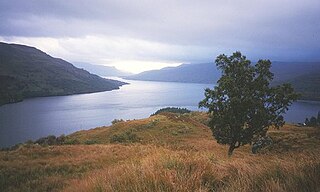 W
WLoch Lomond and The Trossachs National Park is a national park in Scotland centred on Loch Lomond and the hills and glens of the Trossachs, along with several other ranges of hills. It was the first of the two national parks established by the Scottish Parliament in 2002, the second being the Cairngorms National Park. The park extends to cover much of the western part of the southern highlands, lying to the north of the Glasgow conurbation, and contains many mountains and lochs. It is the fourth largest national park in the British Isles, with a total area of 1,865 km2 (720 sq mi) and a boundary of some 350 km (220 mi) in length. It includes 21 Munros and 20 Corbetts.
 W
WLoch Long is a body of water in Argyll and Bute, Scotland. The Sea Loch extends from the Firth of Clyde at its southwestern end. It measures approximately 20 miles (32 km) in length, with a width of between 1 and 2 miles. The loch also has an arm, Loch Goil, on its western side.
 W
WLoch Loskin; is a freshwater loch, on the outskirts of Dunoon on the Cowal peninsula, Argyll and Bute, West of Scotland. The outflow from the loch is the Milton Burn, which winds its way through Dunoon to the Firth of Clyde. The A885 from Sandbank known as the "High Road" locally passes the loch.
 W
WLoch Restil; is a freshwater loch that lies in the pass between Glen Croe and Glen Kinglas on the Cowal peninsula, Argyll and Bute, West of Scotland. One of the main roads to the west of Scotland coast, the A83, passes Loch Restil. The burn that flows from Loch Restil is one of the feeds of Kinglas Water, in Glen Kinglas, which flows under the Butter Bridge.
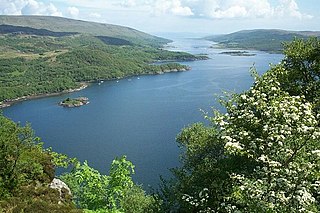 W
WLoch Ruel or Loch Riddon; extends north from the Kyles of Bute and is a Sea Loch, on the Cowal peninsula, Argyll and Bute, Scotland.
 W
WLoch Striven is a sea loch extending off the Firth of Clyde, and forms part of the Cowal peninsula coast, in Argyll and Bute, Scotland.
 W
WLoch Tarsan; is a freshwater loch and impounding reservoir located 13 kilometres Northwest of Dunoon, on the Cowal peninsula in Argyll and Bute, Scotland. This three-armed Reservoir extends into both Glen Tarsan and Glen Lean. It supplies water to the Striven Hydro-Electric Scheme. The larger of the two dams is 17.6 metres high and was completed in 1953. The water that is collected in the loch, are piped to the hydro-electric generating station, located at Ardtaraig, at the head of Loch Striven.
 W
WThe Majestic Line (Scotland) Ltd, West Coast Cruises, is a private cruise line with its headquarters in the Sandbank Marina on the Cowal Peninsula in the West of Scotland. Founded in 2004, it is named after a fictional shipping company that featured in Neil Munro's Tales of Para Handy.
 W
WNew Castle Lachlan, is an 18th-century baronial mansion or country house located at Strathlachlan, Cowal peninsula, Argyll and Bute, Scotland. It was built in 1790 by Donald Maclachlan, 19th laird, to replace the 15th century Old Castle Lachlan, which stands nearby on the shores of Loch Fyne. The building is protected as a category C listed building.
 W
WOld Castle Lachlan, also known as Castle Lachlan, is a ruined 15th-century castle on the shore of Loch Fyne, within the Cowal Peninsula, in Argyll and Bute, Scotland. It was probably built by Clan Maclachlan on lands first recorded in 1314 as "Castlelachlan". Nothing remains of this fourteenth-century castle. Instead, the enclosure of Old Castle Lachlan appears to date to the early fifteenth century, whilst the internal buildings seem to date to the later part of the century. The castle remained a residence of the clan's chiefs until New Castle Lachlan was built as a replacement in 1790, 0.8 kilometres (0.5 mi) east-north-east.
 W
WPolphail was a ghost village in Scotland.
 W
WThe River Eachaig is a river on the Cowal peninsula, Argyll and Bute in western Scotland.
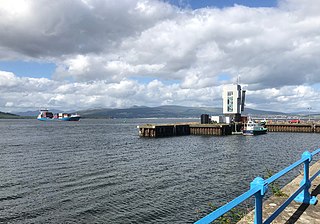 W
WThe Tail of the Bank is the name given to the anchorage in the upper Firth of Clyde immediately North of Greenock, between Inverclyde and Argyll and Bute. This area of the Firth gets its name from the deep water immediately to the west of the sandbank which marks the entrance to the navigable channel up the Estuary of the River Clyde.
 W
WToward Point Lighthouse is on the southern extremity of the Cowal Peninsula, near the village of Toward and six miles south of Dunoon, Argyll and Bute, Scotland. There has been a lighthouse here since 1812.
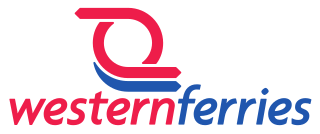 W
WWestern Ferries (Clyde) Ltd is a private ferry company with its headquarters in Hunters Quay, Scotland. It currently operates on the Firth of Clyde running a year-round, high-frequency vehicle carrying service between Hunters Quay near Dunoon and McInroy's Point on the outskirts of Gourock in Inverclyde.